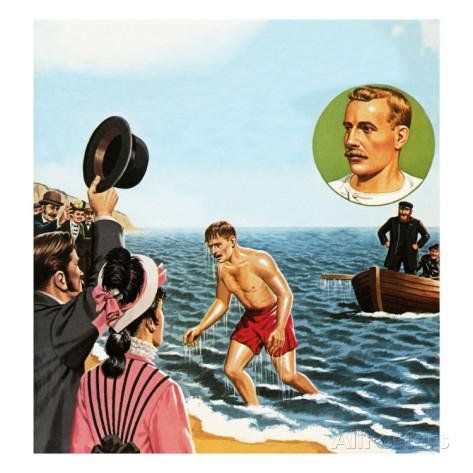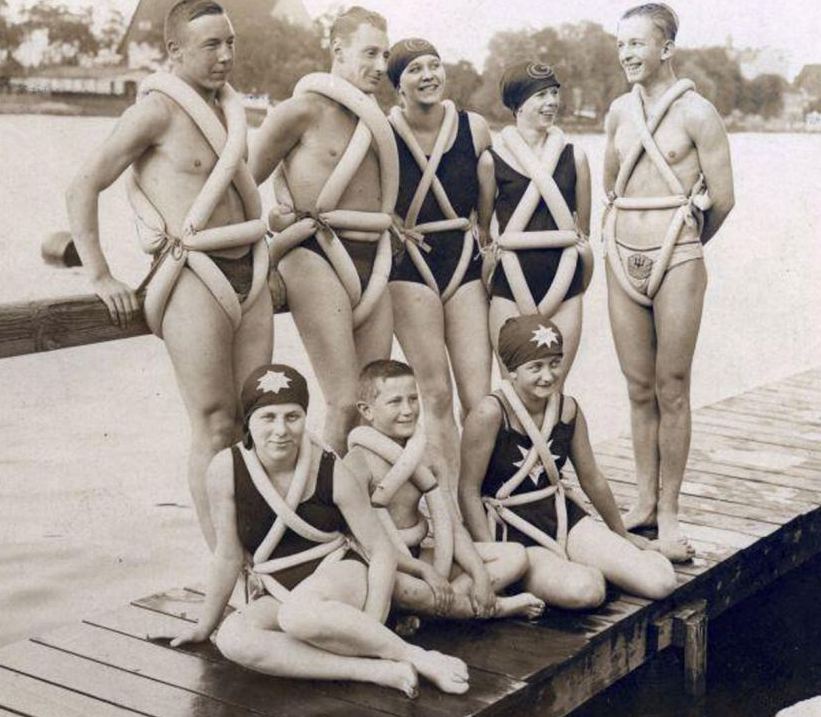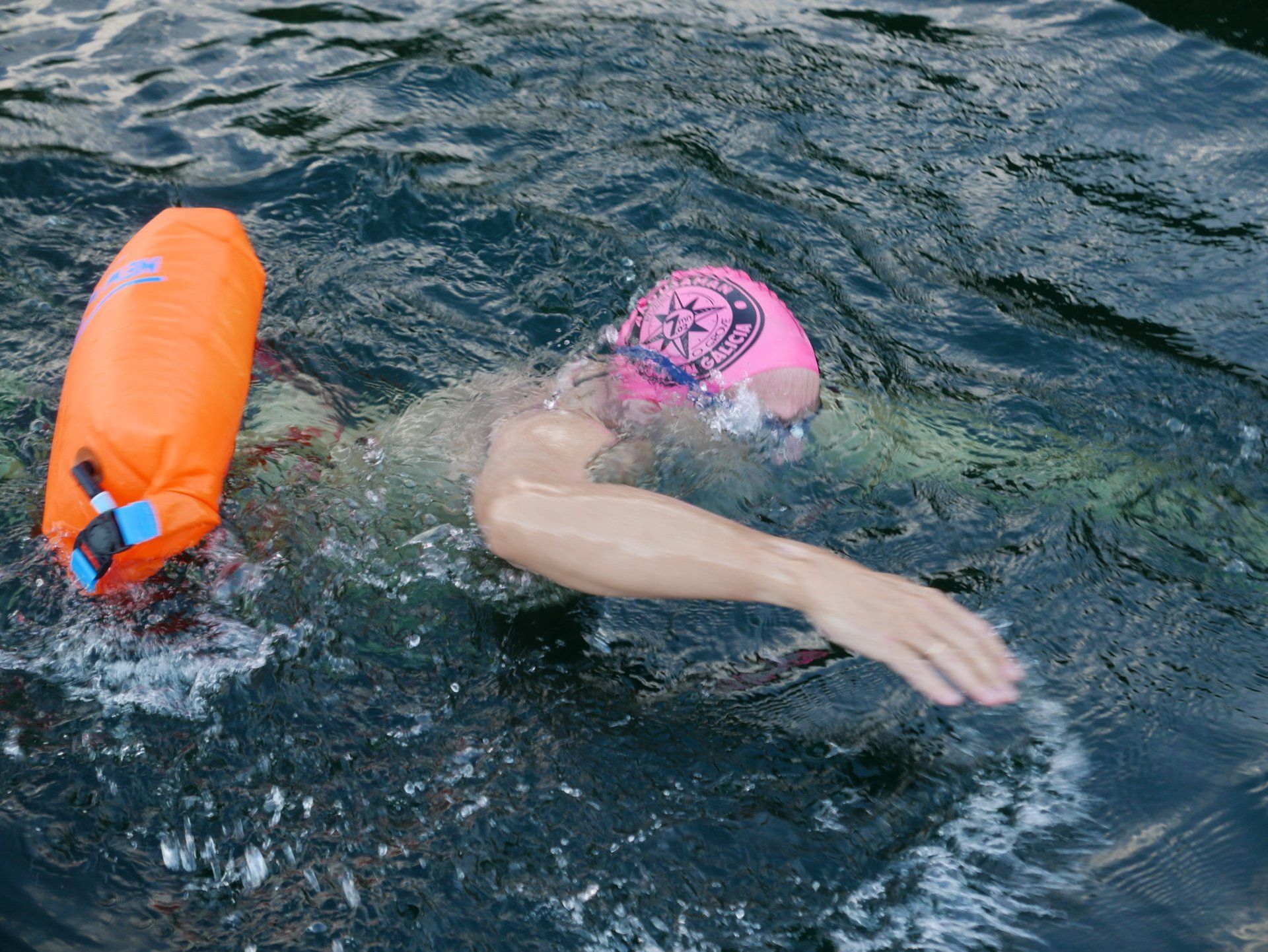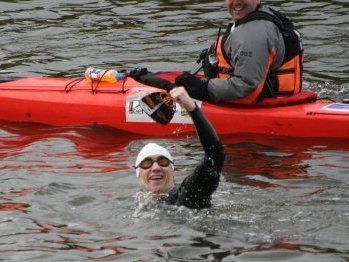PERSONAL KAYAKER REQUIREMENTS (for swimmers wanting to bring additional support)
Full event water safety is provided as part of your entry fee so individuals and teams do not need to bring their own kayak support.
If, however, swimmers would also like to bring a kayaker for additional support that's no problem. We would require that they meet the following conditions for safety purposes.
The minimum skill standard recommended is that equivalent to the kayak component of the BCU Two Star award syllabus (https://www.britishcanoeing.org.uk/courses/2-star-award/ If paddlers do not have this qualification they must have proven experience of providing kayak support to swimmers.
Paddlers must be able to remain with a swimmer and be able to steer a straight course in tail, side and head winds. Tail winds present the greatest challenge to escorting paddlers. If paddling a closed cockpit kayak the ability to exit a capsized boat with spray deck in place is essential. Paddlers of sit on top craft should be able to self-rescue.
Please be aware that paddlers who appear to lack the necessary skills to stay with their swimmer will not be allowed to continue, and the swimmer will be removed from the water by safety officials.
BOATS: Closed cockpit kayaks, sit on top and inflatable kayaks are suitable for use in escorting swimmers.
The boat must be watertight and have sufficient buoyancy to keep it afloat should it capsize. Boats must be fitted with bow and stern toggles or grab handles. Touring / sea kayaks are ideal.
Uswim reserves the right to refuse the use of a boat should it be deemed unsuitable by event officials.
PERSONAL EQUIPMENT:
All paddlers are required to wear a suitable personal flotation device and those using closed cockpit kayaks are required to use a spray deck. Paddlers are advised that they need to wear clothing suitable for being on the water for several hours in potentially changeable weather conditions and to carry food / hydration for the duration of the event. All paddlers are required to carry a whistle for emergency use
On arrival at the event:-
Please ensure that on arrival you register with event officials. Before the swim starts, briefings will be held for swimmers and crew. As well as communicating essential safety information, briefings also provide the opportunity for escort crews to ask questions/seek clarification from the event organisers. You must attend the briefing. As part of the briefing process the event safety officer may wish to inspect your boat or equipment and clarify your level of paddling experience. Paddlers must ensure they are familiar with the swim course.
Before starting the swim:-
Before the event start paddlers need to ensure that they can recognise their swimmer once on the water. Knowing your swimmer’s hat and swimsuit colour helps if it is the first time you have crewed for a swimmer. Find out if the swimmer breathes bi-laterally or to one side and which side they would like you to paddle.
During the swim:-
Once underway paddlers must remain close to their swimmers and stay a maximum of no more than 3 metres away. Try to keep your body parallel or just ahead of the swimmers’ line of sight. During the swim be positive and try and encourage the swimmer, it does help psychologically to smile at them and offer an occasional ‘thumbs up’. Communicating with a swimmer during a race can prove a frustrating experience but try and remember that they will be wearing ear plugs, their ears are covered by a thick silicone hat, goggles steam up and hand signals / gestures can be lost in the glare of the sun! Be aware of signs of fatigue, illness, hypothermia etc.
Escort paddlers are responsible for navigating the swim course and hazard avoidance. Be prepared to shout a warning to other water users if they come too close. If the swimmer starts wandering off course try to attract their attention to this fact and indicate to them the correct course/position. If they try and nudge you off course or try and swim too close to the kayak, motion or shout to them to move away from the boat.
Be aware that a cross wind affects a kayak significantly more than a swimmer and can blow the boat onto the swimmer. If you are continually blown towards them then consider swapping and paddling on the other side of them. Only do this with the agreement of the swimmer and remember that some swimmers only breathe to one side and putting the kayak on the wrong side will mean they will be unable to follow you.
In an emergency, or if the swimmer needs to retire
Ask the swimmer to hold on to the front of their boat, head to one side and legs raised either side of the kayak. This allows you to maintain constant visual contact and speak to them until help arrives
To attract the attention of the rescue boats, make repeated blows on your whistle. If safe to do so, put your paddle vertically in the air to signal your location.
You will usually be asked to make your own way to the finish line and then to check in with officials once you get there.
Your own safety is paramount. If it is being compromised (e.g. by a swimmer panicking and making motions that might capsize the kayak), back away slightly and await help. If you do capsize and are unable to roll back up, exit your kayak and keep holding onto it for buoyancy until help arrives
If you leave the course of the race for any reason (e.g. rescuing yourself to the side), you must, at the earliest opportunity, inform race officials of your whereabouts. In almost all circumstances, it is better to wait to be rescued.




